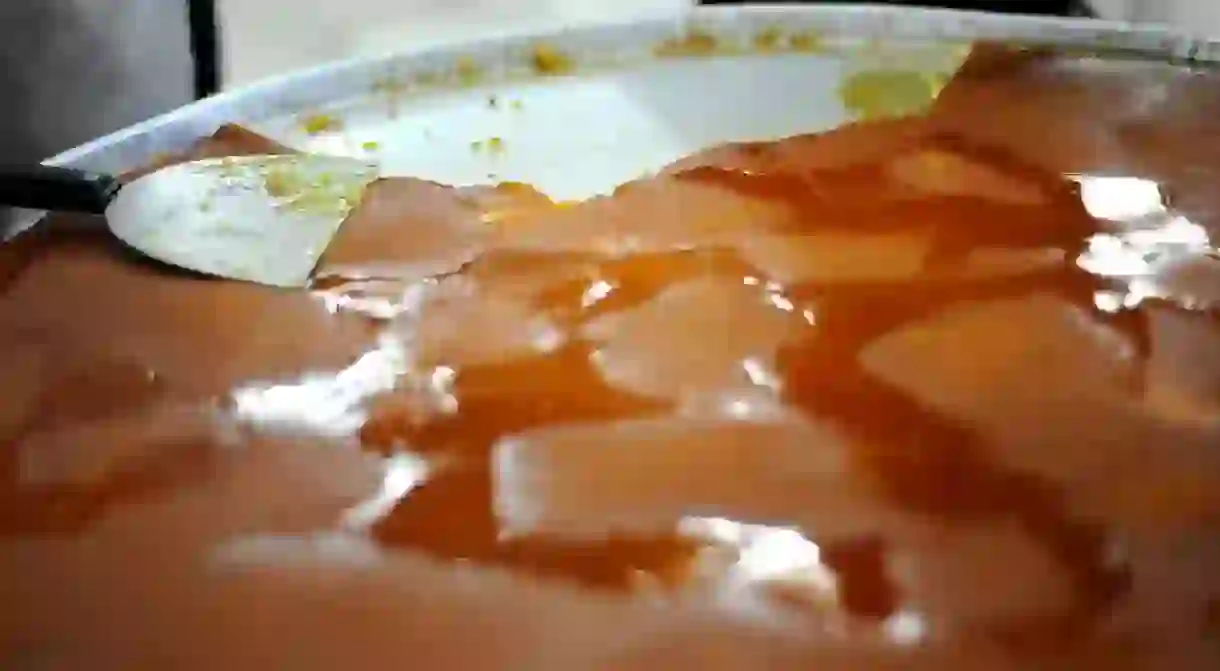7 Reasons Nablus is the Food Capital of the West Bank

The 2,000-year-old city of Nablus is considered the capital of northern West Bank, a lush, green agricultural heartland which grows some of the area’s finest produce. Nablus’ location on the ancient trading route between Jaffa or Jerusalem and Damascus, gave rise to a vibrant food culture, especially during Ottoman times. If you’re looking for a variety of traditional, locally-sourced Palestinian dishes and produce, Nablus is your go-to destination.
Markets
Year-round, Nablus’ fruit and vegetable market, located near ad-dawar, the main roundabout, is piled up with an incredible and ever-changing selection of seasonal, fresh produce. From mountains of grapes and strawberries to cabbages or watermelons the size of a small child, the markets of Nablus are a foodie’s wildest fantasy.

Olives
The hills and villages surrounding Nablus have since ancient times been a major olive-growing region. After the busy olive-picking season in October and November, some olives are pickled in vinegar, making for perfect mezze snacks, while the vast majority are made into olive oil. The mainstay of Palestinian cuisine, you’ll find delicious, local olive oil trickled over everything, or just on its own as a breakfast staple along with bread and za’atar.

Nabulsi cheese
A distant cousin of halloumi, Nabulsi cheese is also made from sheep’s milk and preserved in brine, and when melted or grilled, forms a salty, stringy and delicious addition to salads, sandwiches, or simply on its own alongside olives, figs and other tasty mezze additions.
https://www.instagram.com/p/BYlxNgngD90/?hl=en&tagged=nabulsicheese
Kunafeh
Perhaps the most well-known and well-loved dish to come out of Nablus, or even Palestine as a whole, is kunafeh. Made with an unsalted and mild version of nabulsi cheese, sandwiched between two layers of crispy pastry cooked in butter and doused in sugar syrup – what’s not to love? The al-Aqsa bakery in the Old City is a kunafeh institution, known the length of Palestine, who make their kunafeh pastry in huge circular trays for all to see in their traditional open factory.

Sweets
On top of kunafeh, Nablus is famous for producing a vast array of other sweet treats, from flaky baklawa coated in nuts and syrup, to sticky caramels and deep-fried and doughy Zeinab’s fingers and Awasem. Look out for a traditional bakery and feast your eyes – and stomachs – on the range of baked goods and sugary delicacies on offer. It is also possible to stumble upon traditional sweet-making factories in the Old City of Nablus – even more reason to explore!

Bait al-Karama
Meaning ‘house of dignity’ in Arabic, Bait al-Karama is a women’s collective and social enterprise established by local women after the Second Intifada, with a mission to create jobs and provide women with skills in order to overcome the trauma and loss caused by the uprising and the following conflict, which hit Nablus especially hard. With a focus on food, Bait al-Karama is Nablus’ first ‘Slow Food’ convivium and houses a cooking school where tourists can learn the methods of traditional Palestinian cuisine. Everything is female-run, with the goal of making local women skilled financially and self-sustaining in the face of the Israeli occupation. Food and female empowerment? Yes please! Visit their website for more information.
Bait al-Karama, Nasser Street opposite the al-Kebeer Mosque, Old City, Nablus, Palestine, +972 59 7959924
Tanoreen Restaurant
Another Nabulsi institution, Tanoreen, is famous for its mouth-watering grilled chicken and fish, cooked to charred perfection in its large underground clay ovens – the tanoreen – much like an Indian tandoor. Guests sit on the charming outside terrace that looks out over the city. For more of Nablus’ best restaurants, check out Culture Trip’s guide here.
Tanoreen, Shwaikah Street, Nablus, Palestine, +970 9 235 1539














